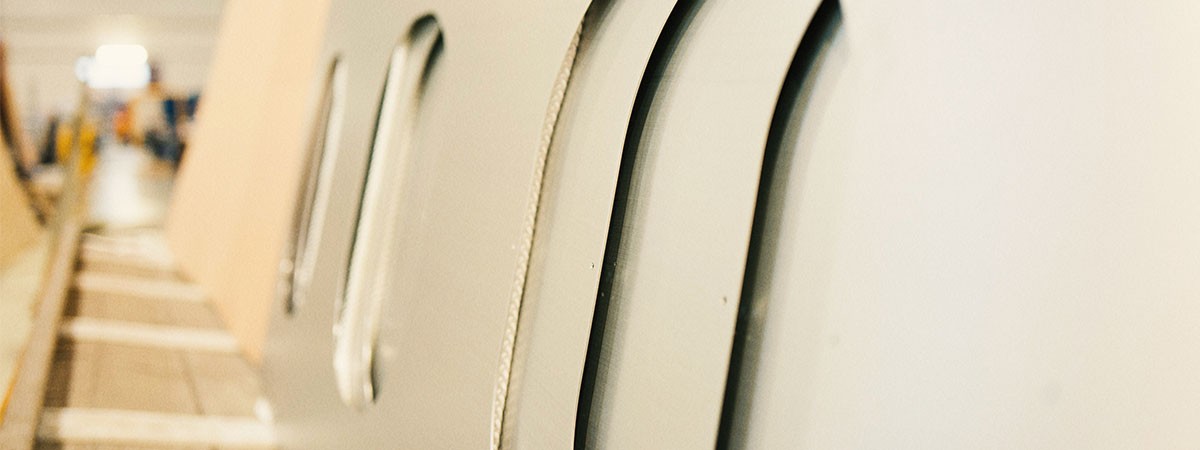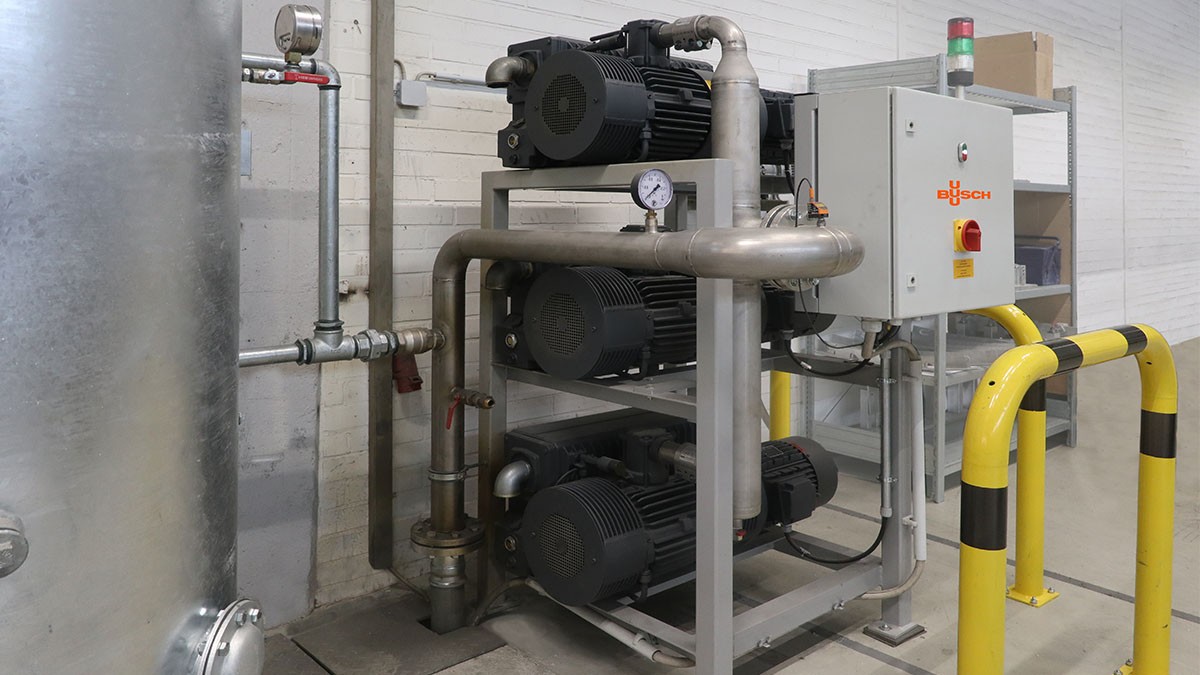When milling the metal sheets on two 5-axis milling machines, vacuum suction cups are used to hold the pre-bent sheets on the machining tables. A vacuum system from Busch Vacuum Solutions with three R5 rotary vane vacuum pumps generates the vacuum for both milling machines.
Due to the design and pressure-dependent control of the vacuum system, it works extremely energy-efficiently and ensures reliable holding of the aluminum sheets during contour milling.
About A&T Group
A&T Group was founded in 2007 and offers various products and services with the network of its own companies. In addition to aircraft components made of light metal, A&T manufactures decorative profiles in various geometries for aircraft interiors in series production. A&T also produces custom-fit glass fiber and carbon blanks for the manufacture of rotor blades for wind turbines. The company is also active in the logistics sector at several locations in Germany.A&T Manufacturing at the company's headquarters in Nordenham specializes in the processing of aluminum for aircraft construction and manufactures complex structural components for the civil aviation industry with the highest precision and quality standards.
Clamping aluminum sheets
Sheets of aluminum, aluminum alloys or titanium are used. Flat metal sheets are surface-milled on machining tables using 3-axis milling machines. Each of the machines can mill up to 2.8-meter wide and 10-meter long sheets. Vacuum is used to hold the sheets. They are held securely and immovably by suctioning through openings in the machining tables. The vacuum is generated by two MINK claw vacuum pumps from Busch. These dry (operating fluid-free) vacuum pumps are pressure- and frequency-controlled.It is more technically complex, for example, to mill contours of metal sheets that have already been rolled or stretch-drawn into shape to match the radius of an aircraft fuselage. As they cannot be laid perfectly flat on the machining table, height-adjustable vacuum suction cups are used. They are attached precisely at the specified position on the machining table and adjusted in height to the formed metal sheet part.
Our solution
The role of the Busch vacuum system (fig. 2) is to precisely maintain the pre-set vacuum level. This vacuum level is programmed in such a way that, on the one hand, it is sufficiently high to hold the metal sheets safely during milling and, on the other hand, it is not too high so that the metal sheets could possibly warp or bend.
Since metal sheets as thin as 0.3 millimeters thick and up to seven meters long are sometimes processed, the set vacuum level is an important parameter for the quality and precision of the components.
Each of the two milling machines had previously been fitted with an obsolete rotary vane vacuum pump, which ran continuously throughout the entire operating time. In three-shift operation and a five-day week, the two 7.5 kilowatt motors consumed around 85,000 kilowatt hours per year.
This was reason enough for production manager Leenert Folkens to strive for a more energy-efficient vacuum supply. Thanks to the great experiences with vacuum pumps from Busch on the other milling machines, he consulted a Busch vacuum expert. The decision was made for a vacuum system with three R5 rotary vane vacuum pumps.

